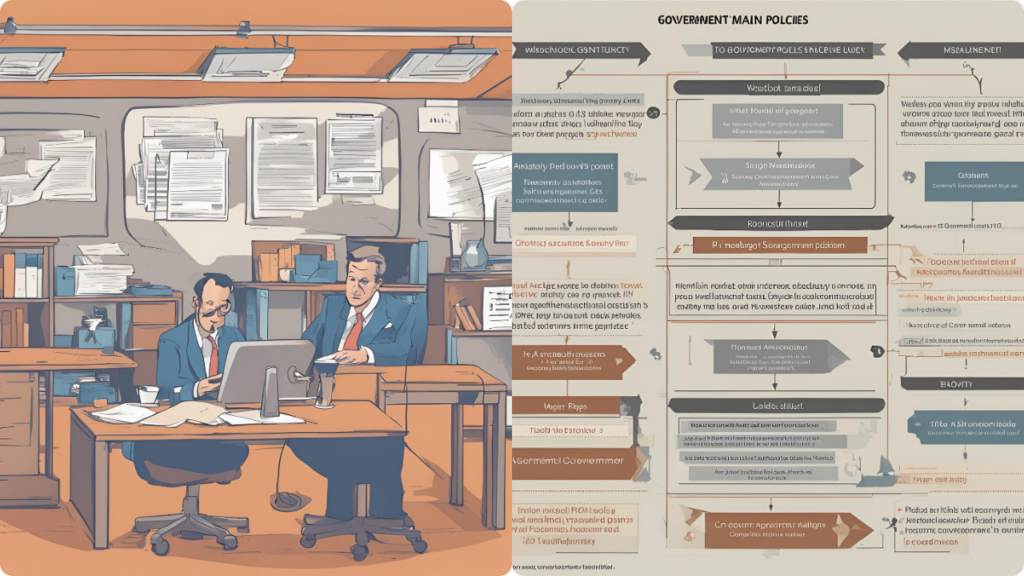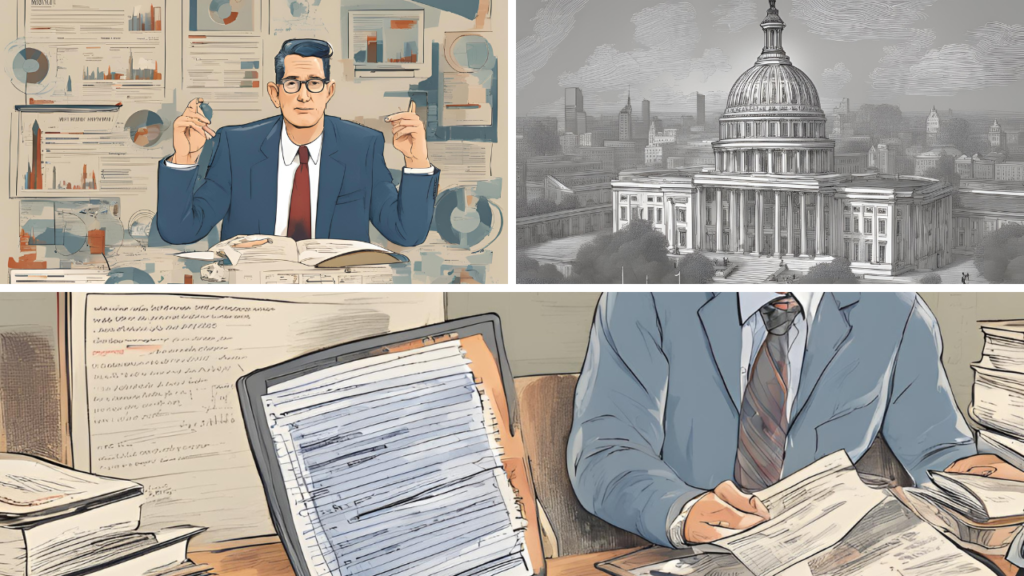Table of Contents
Introduction
1. Definition of Government Policy Analysis
2. Importance of Analyzing Government Policies
3. Objectives of Government Policy Analysis
Understanding Government Policies
1. Definition and Scope of Government Policies
2. Types of Government Policies
– Social Policies
– Economic Policies
– Environmental Policies
– Foreign Policies

3. The Policy-Making Process
– Identification of Issues
– Policy Formulation
– Policy Adoption
– Policy Implementation
– Policy Evaluation
Frameworks and Models for Policy Analysis
1. Rational Model
2. Incrementalism
3. Punctuated Equilibrium
4. Advocacy Coalition Framework
5. Multiple Streams Framework
Methods and Tools for Policy Analysis
1. Qualitative Methods
– Case Studies
– Interviews
– Focus Groups
2. Quantitative Methods
– Statistical Analysis
– Econometric Models
3. Mixed Methods
4. Cost-Benefit Analysis
5. SWOT Analysis
6. Policy Simulation and Modeling
Steps in Policy Analysis
1. Problem Identification
2. Establishing Evaluation Criteria
3. Identifying Alternatives
4. Evaluating Alternatives
5. Comparing Alternatives
6. Making Recommendations
Evaluating Policy Outcomes
1. Effectiveness
2. Efficiency
3. Equity
4. Responsiveness
5. Appropriateness
6. Sustainability

Challenges in Policy Analysis
1. Political Influence and Bias
2. Data Limitations
3. Complexity of Issues
4. Unintended Consequences
5. Stakeholder Conflicts
Case Studies
1. Analysis of Healthcare Policy
2. Analysis of Environmental Policy
3. Analysis of Economic Policy
4. Analysis of Education Policy
Expert Insights
1. Quotes from Policy Analysts
2. Interviews with Government Officials
3. Insights from Academics
Conclusion
1. Summary of Key Points
2. Importance of Continuous Policy Analysis
3. Call to Action for Engaged Citizenship
FAQs
1. What is government policy analysis?
2. Why is it important to analyze government policies?
3. What are the main types of government policies?
4. What frameworks are used in policy analysis?
5. What are the steps in conducting a policy analysis?
6. How do you evaluate the effectiveness of a policy?
7. What challenges are faced in policy analysis?

—
How to Analyze Government Policies
Introduction
Definition of Government Policy Analysis
Government policy analysis is a systematic approach to evaluating the design, implementation, and outcomes of public policies. It involves the application of various qualitative and quantitative methods to understand the impact of policies and to suggest improvements. This process helps ensure that policies effectively address public needs and are implemented efficiently.
Importance of Analyzing Government Policies
Analyzing government policies is crucial for several reasons. It helps in assessing the effectiveness and efficiency of policies, ensuring that public resources are used wisely. Moreover, it provides insights into whether the policies are achieving their intended goals and highlights areas for improvement. Effective policy analysis also promotes transparency and accountability in government actions, fostering public trust.
Objectives of Government Policy Analysis
The primary objectives of government policy analysis include evaluating the success of policy initiatives, identifying any unintended consequences, providing recommendations for policy improvements, and ensuring that policies are equitable and sustainable. These objectives aim to enhance the overall governance process and contribute to better societal outcomes.
Understanding Government Policies
Definition and Scope of Government Policies
Government policies are deliberate actions or strategies adopted by governmental entities to address specific public issues. These policies can be broad, covering various aspects of public life such as health, education, environment, and economy. The scope of government policies encompasses the formulation, implementation, and evaluation stages, ensuring that the policies effectively meet their objectives.
Types of Government Policies
Social Policies
Social policies are designed to improve the welfare of the citizens. These policies address issues such as healthcare, education, housing, and social security. The goal is to enhance the quality of life and promote social justice.
Economic Policies
Economic policies involve measures to regulate and control the economy. These include fiscal policies, monetary policies, trade policies, and industrial policies. The aim is to achieve economic stability, growth, and development.
Environmental Policies
Environmental policies are focused on protecting the environment and promoting sustainable development. These policies address issues such as pollution control, conservation of natural resources, and climate change mitigation.
Foreign Policies
Foreign policies govern a country’s interactions with other nations. These policies aim to protect national interests, promote international cooperation, and ensure national security.

The Policy-Making Process
Identification of Issues
The policy-making process begins with the identification of issues that require government intervention. This involves recognizing problems that affect the public and need a structured approach to address them.
Policy Formulation
In this stage, various policy options are developed and analyzed. Stakeholders are consulted, and the potential impacts of different policy alternatives are considered.
Policy Adoption
Policy adoption involves the selection and approval of a particular policy option by the relevant authorities. This may include legislative approval, executive orders, or administrative regulations.
Policy Implementation
Once adopted, policies need to be implemented effectively. This involves the allocation of resources, establishment of administrative mechanisms, and monitoring of the implementation process.
Policy Evaluation
The final stage of the policy-making process is the evaluation of the policy’s outcomes. This helps in assessing whether the policy has achieved its objectives and identifying areas for improvement.
Frameworks and Models for Policy Analysis
Rational Model
The rational model of policy analysis is a structured and systematic approach that involves defining problems, identifying objectives, generating alternatives, evaluating alternatives, and selecting the best option. This model is based on logical reasoning and aims to maximize the efficiency and effectiveness of policies.
Incrementalism
Incrementalism suggests that policies are often developed through small, incremental changes rather than large, comprehensive reforms. This approach is practical and considers


